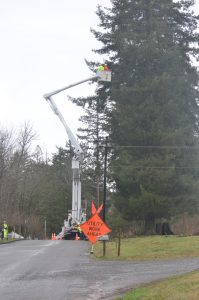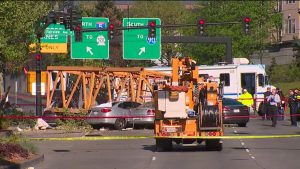 According to the Occupational Safety and Health Administration (OSHA), electrocutions are the third highest cause of construction worker deaths. Many electrical injuries and fatalities occur after a crane comes into contact with a powerline and the electrical current travels through the crane to the operator of the equipment. In order to help prevent these accidents from ever occurring, OSHA created extensive construction workplace safety rules for the operation of cranes and booms operating near powerlines. (29 C.F.R. 1926.1408).
According to the Occupational Safety and Health Administration (OSHA), electrocutions are the third highest cause of construction worker deaths. Many electrical injuries and fatalities occur after a crane comes into contact with a powerline and the electrical current travels through the crane to the operator of the equipment. In order to help prevent these accidents from ever occurring, OSHA created extensive construction workplace safety rules for the operation of cranes and booms operating near powerlines. (29 C.F.R. 1926.1408).
Under the OSHA regulation, before beginning equipment operations an employer must complete a number of steps. First, the employer must identify the work zone. The employer can either mark off the boundaries and prohibit equipment operators from going beyond the marked boundaries, or the employer can define the work zone as 360 degrees around the equipment up to the maximum working radius.
If any part of the construction equipment could get closer than 20 feet to a powerline within the identified work zone, the employer must take additional steps and complete one of the following options:
 Seattle Injury Lawyer Blog
Seattle Injury Lawyer Blog


 A construction crane collapsed from the roof of a building on Saturday afternoon tragically killing four people and injuring four others. Two of the people killed were ironworkers and two others were bystanders. The crane was positioned on the new Google Seattle campus and was in the process of being dismantled when it fell.
A construction crane collapsed from the roof of a building on Saturday afternoon tragically killing four people and injuring four others. Two of the people killed were ironworkers and two others were bystanders. The crane was positioned on the new Google Seattle campus and was in the process of being dismantled when it fell.